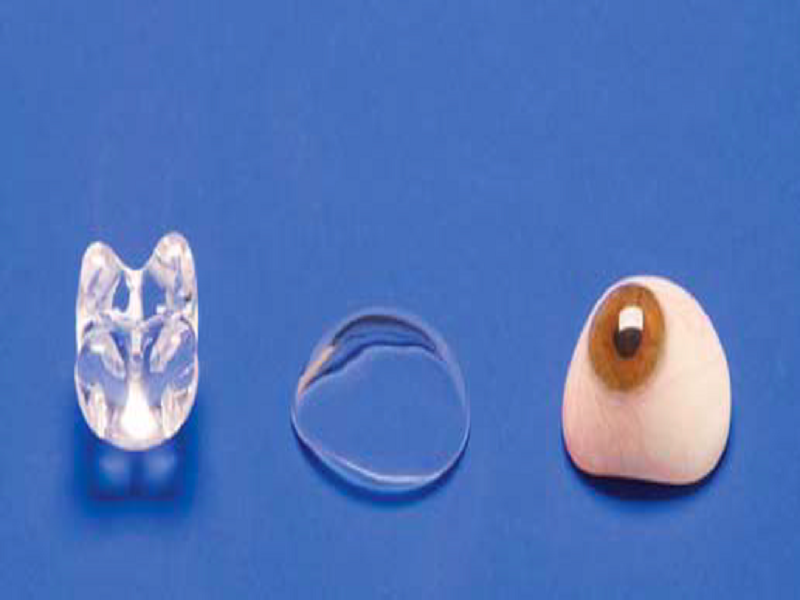Ocular enucleation, also known as exenteration, is a last-resort surgical procedure in Turkey in which the entire eyeball is removed. This radical surgery is considered when one eye is severely damaged or suffers from an incurable pathology that threatens the vision of the other eye.
People with:
- Cancer
- Severe unglaucoma
- Ophthalmic melanoma
- The hemorrhage
- The hematoma
- The infection
- Scar disunity
- Cornea transplant
- Eye implantation
Eye removal in Turkey : Best prices & assistance
The price of an eye enucleation in Turkey starts at 1,000 USD and can go up to around 2,000 USD. These prices are estimates only, so the actual cost of your treatment may vary depending on your case.
Turquie Santé opens the doors to renewed vision by connecting you with Turkey's top eye surgeons in state-of-the-art clinics and hospitals.
Your journey to restored vision begins with:
- A free teleconsultation with our experienced ophthalmologists to accurately assess your case.
- A personalized quote for eye enucleation in Turkey at an attractive price.
- Full support throughout your medical stay, from booking your appointment to your full recovery.
Turquie Santé is committed to providing you with a first class medical experience:
- VIP transfers from the airport, clinic or your hotel.
- Immediate attention from our dedicated team.
- A dedicated interpreter who speaks your native language for smooth communication.
- Provision of your medical reports in French and English.
- Immediate intervention in case of emergency or complication.
Contact us today to learn more about eye enucleation in Turkey! Let us guide you to clearer vision and a brighter future.
Best Clinics with Verified Reviews

- Multispecialized hospital
- 7 operating rooms
- Capacity é of 170 beds

- Multispecialized hospital
- Hospital founded in 2007
- Very good reputation in ENT department
Eye enucleation surgery in Turkey: In what cases?
Eye enucleation surgery, or removal of the eye, is a procedure performed in certain cases, including:
- Large eye tumors.
- Severe injury: After major trauma to the eye, such as an accident or assault, the eye may be severely damaged and cannot be saved. Enucleation can help prevent pain and potential complications.
- Chronic eye pain: In some cases, eyes that have lost their vision can cause intense, persistent pain. In these cases, enucleation may be considered to relieve the patient of this suffering.

Types of eye tumors
There are two types of tumors that require removal of the eye:
Ocular melanoma
Ocular melanoma is a rare cancer that affects the melanocyte cells in the eye. When these cells become cancerous, the tumor grows and can affect the iris. If the tumor reaches the iris and begins to grow, or if symptoms occur, removal of the eye may be necessary.
Retinoblastoma (retina tumor)
Retinoblastoma is a malignant tumor that develops in the retina, a thin layer of tissue that lines the back of the eye and is responsible for capturing light and forming images.
- Unilateral treatment: If the cancer is confined to one eye, removal of the eye may be necessary, especially for large tumors that threaten vision.
- Bilateral treatment: If the cancer is in both eyes, removal of the eye with the larger tumor is usually considered. Radiation therapy may also be recommended for the other eye to prevent progression of the cancer.
Ocular enucleation procedure
Ocular enucleation is usually performed under local anesthesia, which means that the patient is conscious during the procedure but does not feel any pain. The anesthetic is injected around the eye and into the patient's vein, and a sedative may also be given to reduce anxiety.
The procedure steps include:
- Measuring and marking the eyeball: The surgeon measures the dimensions of the eyeball, optic nerve, and cornea, and then marks the eye to determine the incision site.
- Opening the eye: A dissecting microscope is used to view the eye in detail, and a sharp blade is used to open the eye.
- Removing the eyeball: The eyeball is carefully removed from its socket, taking care not to damage the surrounding muscles and nerves.
- Closing the orbit: The orbital cavity is closed with stitches, and an ocular prosthesis may be placed for aesthetic reasons.
The surgical technique for enucleation involves making a circular incision behind the eye, starting near the optic nerve and ending at the cornea. The exact position of the incision depends on the location of the lesion to be removed. In the absence of a specific lesion, the eye is cut horizontally.
Ocular enucleation is a major surgical procedure that can have a significant impact on a patient's life. It is important to discuss the risks and benefits of this procedure with an ophthalmologist before making a decision.
Complications of eye enucleation surgery
Complications after eye removal surgery are infrequent, but it's important to be aware of potential issues such as :
- Bleeding
- Infection
- Scarring
- Persistent swelling and pain
- The need for further surgery.
In case of any complications, seeking immediate medical attention is crucial for effective treatment.
For those who have undergone eye removal, the possibility of eye transplantation in the future is worth considering. While infection is a risk associated with this procedure, strict surgical protocols and prophylactic antibiotic treatment can help minimize it.
Following surgery, patients wear a temporary eye prosthesis for two to six weeks. Once the swelling and redness have subsided, a permanent ocular prosthesis is fitted, providing a natural appearance and a sense of satisfaction.
Share this page







